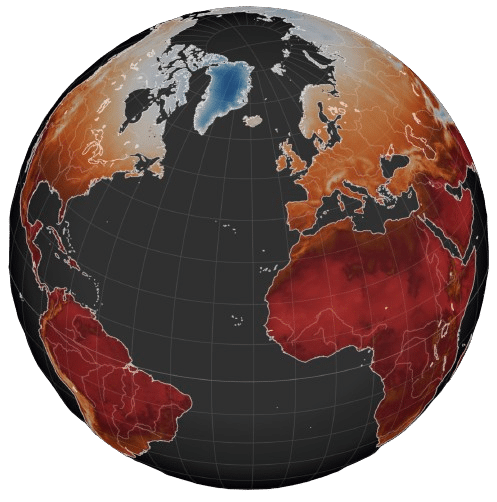Future Water Stress Hazard
Overview
A global dataset at 0.1° degrees resolution of twelve water stress indicators from five climate models under three Shared Socioeconomic Pathways (SSPs) scenarios from the Intergovernmental Panel on Climate Change (IPCC) Sixth Assessment report (AR6). The time resolution is annual from 1981 to 2100.
Future Water Stress dataset specifications
| Specification | Description |
| Experiment | CMIP6 |
| Scenarios | Shared Socioeconomic Pathways SSP5-8.5, SSP2-4.5 and SSP1-2.6. |
| Climate Models | The 5 models selected by the ISIMIP initiative: IPSL-CM6A-LR GFDL-ESM4, UKESM1-0-LL MPI-ESM1-2-HR, MRI-ESM2-0. |
| Spatial Resolution | 0.1° x 0.1° Global |
| Temporal resolution | Annual from 1981 to 2100 |
| Indicators | The water stress hazard indicators are based on the potential evapotranspiration (ET₀) computed from daily climate variables using three reference methods: Penman-Monteith (FAO-56), Hargreaves-Samani, and Priestley–Taylor. Indicators are defined as follows: – Annual water stress: Annual sum of the daily difference between precipitation and potential evapotranspiration (P – ET₀), representing the yearly net water balance. Negative values indicate annual-scale hydrological deficit. – High evapotranspiration days: Annual count of days when daily ET₀ exceeds the 90th percentile threshold, based on a historical reference period. – Severe water deficit days: Annual count of days when daily ET₀ exceeds daily precipitation by more than a fixed threshold (5 mm), highlighting periods of acute water stress. – Cumulative evapotranspiration: Annual sum of daily ET₀ values, representing the total atmospheric demand for water over the year. |
| Format | Netcdf, other formats possible depending on data volume |
Supplementary information
The Future Water Stress dataset provides climate indicators that quantify the intensity and frequency of hydrological stress under historical and future climate scenarios. These indicators are derived from the daily difference between precipitation and potential evapotranspiration (P – ET₀), computed using three reference methods: Penman-Monteith (FAO-56), Hargreaves-Samani, and Priestley–Taylor. Metrics include the annual water balance, cumulative evapotranspiration, frequency of high evapotranspiration days, and days of severe water deficit. All indicators are calculated from downscaled bias-adjusted daily simulationsoutputs of downscaled CMIP6 global climate models, supporting consistent assessments across spatial and temporal scales.
Water Stress dataset availability
The dataset can be delivered according to your specifications, contact us for a quote.

